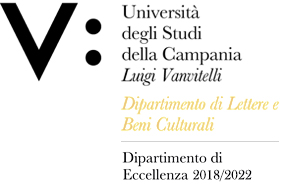Andrea ZEZZA
Insegnamento di STORIA DEL DISEGNO E DELLA GRAFICA
Corso di laurea magistrale in ARCHEOLOGIA E STORIA DELL'ARTE
SSD: L-ART/02
CFU: 6,00
ORE PER UNITÀ DIDATTICA: 30,00
Periodo di Erogazione: Secondo Semestre
Italiano
| Lingua di insegnamento | Italiano |
| Contenuti | Il disegno nel Rinascimento italiano: Leonardo e Michelangelo, due casi a confronto |
| Testi di riferimento | Il corso avrà natura seminariale. Il programma definitivo sarà diffuso al termine delle lezioni. |
| Obiettivi formativi | L’insegnamento intende fornire le conoscenze approfondite sulla storia e sulle tecniche del disegno nel Rinascimento attraverso l’esame delle fonti e delle opere, con particolare attenzione alla grafica di Leonardo e di Michelangelo. |
| Prerequisiti | l corso presuppone una conoscenza pregressa di tipo manualistico della storia dell’arte italiana del Rinascimento. Gli studenti che non hanno mai affrontato questo tipo di studi potranno recuperare su un buon manuale per le scuole superiori (testo consigliato: P. De Vecchi, E. Cerchiari, Arte nel tempo, Milano, Bompiani, 1991-1992 oppure |
| Metodologie didattiche | Lezioni frontali, esercitazioni/seminari, sopralluoghi. |
| Metodi di valutazione | Esame orale |
| Altre informazioni | La frequenza è obbligatoria. Gli studenti che, per validi e comprovati |
English
| Teaching language | Italian |
| Contents | Drawing in Italian Renaissance: Leonardo and Michelangelo. |
| Textbook and course materials | The final syllabus will be circulated at the end of the lectures. |
| Course objectives | The course aims to provide in-depth knowledge of the history and techniques of drawing in the Renaissance through the examination of sources and works, with special emphasis on the graphic design of Leonardo da Vinci and Michelangelo. |
| Prerequisites | General knowledge of History of Art in Italy, 16th-17th centuries. |
| Teaching methods | Lectures, lab sessions, inspections, seminars. |
| Evaluation methods | Oral examinations. |
| Other information | Attendance is required. Students who cannot attend must contact the |








